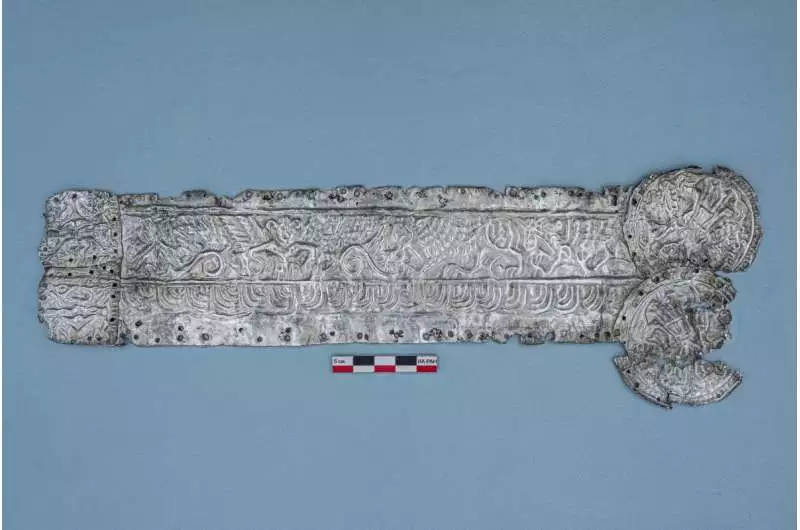A silver plate dating back to the 4th Century BC bearing a mix of Greek images and images from Asia Minor has been recovered from the Devitsa V burial ground, which is located in central Russia along the Devitsa River, according to a statement released by the Institute of Archaeology of the Russian Academy of Sciences.
Measuring about 13 inches long and three inches wide, the plate was found nailed to a wooden base with silver nails. The images of winged Scythian gods as well as eagle-headed griffins and other creatures.
Archaeologist Valeriy Gulyaev said the plate is the first artifact depicting Scythian gods to be recovered far from the known Scythian centers. It was found in the northeast corner of a tomb that, although looted in ancient times, still held traces of a man who had been buried with pottery, weapons, food, and pieces of a horse harness decorated with bronze, wolf-shaped plates.
Scythia was a loose nomadic empire that originated as early as the 8th century BC. Scythian culture centred around equestrianism and a free-riding way of life. Most of the written information available today about the region and its inhabitants at the time comes from protohistorical writings of Ancient India, Ancient Greece, Ancient Rome, and Ancient Persia.














